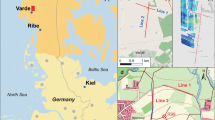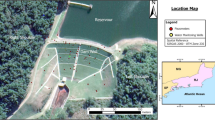Summary
Surface geophysical surveys and geophysical well logging are aimed at the detection and location of subsurface geological structures and the determination of certain physical characteristics, which depend on e.g. pore volume, rock structure and the properties of the liquid filling the pores. Geophysical surveys permit the reduction of the drilling programme; geophysical well logging enables the application of fast drilling methods.
Geo-electrical surveying is applied in the exploration of large areas for geo-hydrological purposes. Local studies e.g. to determine the extension of a geological formation can also be made economically.
The seismic refraction method involves the creation of a shock at the earth’s surface and the determination of the time required for the resulting shock wave to travel known distances to geophones. The travel time of elastic waves depends upon the properties (e.g. density, cementation) of the layers which they pass. Seismic waves may be reflected and refracted at any velocity discontinuity (interface).
Geophysical well logging methods, nearly always used in combination, can furnish information regarding lithology, stratigraphy, porosity and water quality in terms of salt content or total hardness.
Most electrical methods can only be applied in uncased wells; methods based on the natural or induced radioactivity of rocks yield valuable information as well in cased wells.
Résumé
Des méthodes d’investigation géophysique des terrains en place sont utilisées couramment dans le domaine de la géologie de génie civil et d’autres techniques. Elle permet en particulier d’étudier de façon relativement précise les propriétés des gisements. De telles méthodes permettent une réduction du programme de forage et l’utilisation de méthodes rapides de forage. L’auteur traite plus en détail les systèmes géoélectriques et seismiques. Les méthodes géophysiques, presque toujours utilisées en combinaison, peuvent fournir d’informations lithologiques, stratigraphiques, de porosité et sur la qualité de l’eau.
La plupart des méthodes électriques ne peut être qu’utilisée dans des trous, de forage sans de parois de soutien; des méthodes qui se basent sur la radioactivité des gisements fournissent d’information estimable dans toute sorte de forage.
Similar content being viewed by others
References
GRIFFITHS D.H. — KING R.F. (1965): Applied Geophysics for Engineers and Geologists. — London, Pergamon Press Ltd.
SCOTT KEYS W. — MacCARY L.M. (1971): Application of borehole geophysics to water-resources investigations. — Washington, U.S. Department of the Interior.
JEURISSEN G.F.J.: Rapport inzake een geo-elektrisch onderzoek van de provincie Overijssel (kaartbladen 28 Oost en 29). — Voorburg, Werkgroep geo-elektrisch onderzoek TNO.
Author information
Authors and Affiliations
Rights and permissions
About this article
Cite this article
Terwey, J.L. Geophysical investigations. Bulletin of the International Association of Engineering Geology 10, 39–43 (1974). https://doi.org/10.1007/BF02634630
Issue Date:
DOI: https://doi.org/10.1007/BF02634630




